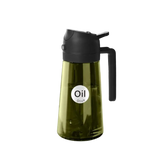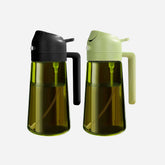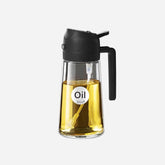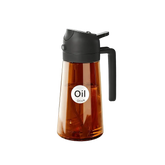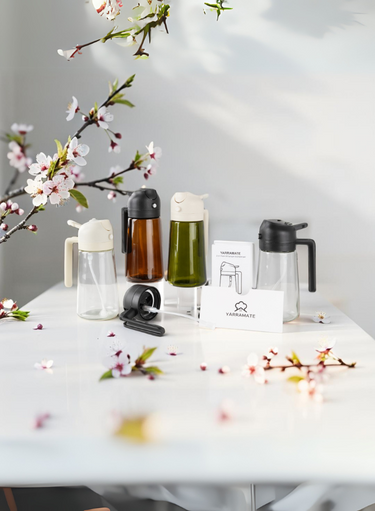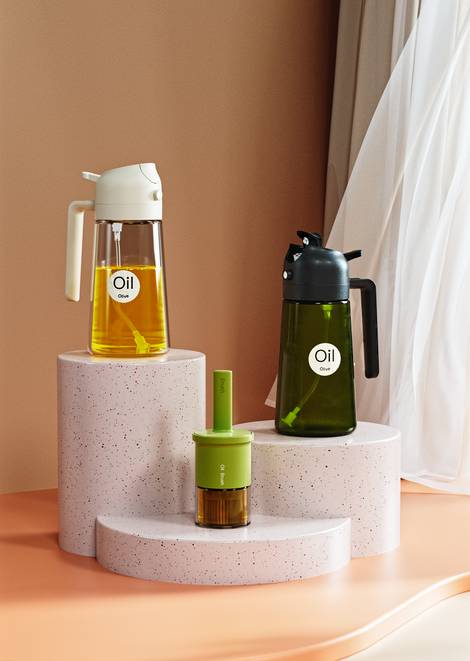10 tips of using an oil sprayer correctly
Kitchen How‑To • Oil Sprayer Guide
Why Using an Oil Sprayer Matters
Cooking is about balance — a drizzle too much can change the flavor, calories, and even the texture of your dish. An oil sprayer helps distribute oil evenly, making cooking lighter, healthier, and more enjoyable.
According to Mayo Clinic, reducing excessive oil intake can lower risks of heart disease and obesity. Using a glass spray bottle for oil instead of pouring directly from a bottle makes portion control easier and more precise.

Table of Contents
- Tip 1: Choose the Right Oil Sprayer
- Tip 2: Fill Your Oil Sprayer Correctly
- Tip 3: Keep the Nozzle Clean
- Sub-tip: Avoid Sticky Oils
- Tip 4: Avoid Overfilling
- Tip 5: Shake Before Spraying
- Tip 6: Use the Right Quality Oils
- Tip 7: Care for the Straw Inside
- Tip 8: Clean Your Oil Sprayer Regularly
- Tip 9: Store Oils in Dark Glass Bottles
- Tip 10: Observe the Lifespan of Your Oil Sprayer
Tip 1: Choose the Right Oil Sprayer
Not all sprayers are created equal.
- Dark glass oil bottles protect oil from sunlight and slow oxidation.
- Stainless steel sprayers look modern but may hide the oil level.
- Black or opaque designs also help preserve freshness by blocking light.
Small tip If you often cook outdoors, choose a dark glass option to prevent sunlight damage.
Tip 2: Fill Your Oil Sprayer Correctly
Overfilling is one of the most common mistakes. Leave at least 1/3 empty space for pressure buildup. This ensures a fine mist rather than uneven drops.
Tip 3: Keep the Nozzle Clean
The nozzle is the heart of your sprayer. If clogged, the mist becomes inconsistent. After every few uses, spray warm water through it to clear residues.
Sub‑tip: Avoid Sticky Oils
Tip 4: Avoid Overfilling
Too much oil inside creates poor spray performance. Stick to the manufacturer’s guidelines ~100–120 ml.
Tip 5: Shake Before Spraying
A quick shake helps the oil distribute evenly and prevents clogging in the straw. It also makes the mist finer.
Tip 6: Use the Right Quality Oils
Some oils perform better in sprayers:
- Olive oil (filtered, light)
- Avocado oil (heat‑stable)
- Grapeseed oil (neutral taste)
Tip 7: Care for the Straw Inside
The small straw at the bottom ensures oil is drawn properly. If it bends or gets dirty, the sprayer won’t work well. Rinse it with warm water monthly.
Tip 8: Clean Your Oil Sprayer Regularly
Just like a coffee machine, sprayers need periodic cleaning. Once a month, fill with warm water + vinegar, then spray through. This prevents build‑up and keeps oil fresh.
According to Statista (2024), over 40% of home cooks reported discarding oil sprayers prematurely simply due to lack of cleaning — a waste you can avoid.
Tip 9: Store Oils in Dark Glass Bottles
Light and heat are the enemies of oils. A dark glass oil bottle or a black design slows oxidation and keeps oils fresher for longer.
Tip 10: Observe the Lifespan of Your Oil Sprayer
Even the best sprayer has a lifespan. Replace if:
- The nozzle leaks constantly
- The straw is cracked
- The bottle glass is scratched


